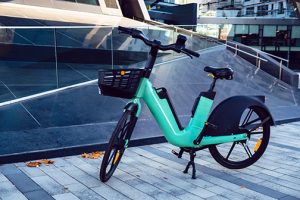
By Mary O’KEEFE
Electric bikes (e-bikes), as well as e-scooters, have become a topic of conversation within school districts and law enforcement.
An electric bike is a bicycle equipped with an electric motor and battery. Bike companies have categorized the e-bikes into three levels: Class 1 and Class 2 have speeds that have a maximum of 20 mph; Class 3 e-bikes can reach speeds up to 28 mph.
E-scooters are motorized scooters powered by an electric motor and battery. A hoverboard is a two-wheeled motorized device. All three are known as micro-mobility devices.
CVW will be looking at micro-mobility devices, the growing trend of using them, the safety issues surrounding them and the laws that pertain to them.
In a study published online in JAMA Surgery on Feb. 21, 2024, and referenced in Scripps/Wellness and Prevention, imports of e-bikes topped 1.1 million in 2022 compared to 437,000 in 2020. The study examined e-bike injuries and hospitalizations in the U.S. from 2017 to 2022. The study was based on hospital data, which indicates a growing concern regarding the safety of e-bikes.
A study by the U.S. Consumer Product Safety Commission (CPSC) found that hospitals reported treating 53,000 e-bike related injuries from 2017 to 2022. In 2017 injuries reported were 3,500 but in 2022 the number of injuries reported was 24,400.
According to the CPSC study, e-scooters continued to show an increase in injuries, year-over-year, rising 22% in 2022 from 2021. Nearly half – 46% – of all estimated e-bike injuries from 2017 to 2022 occurred in 2022 alone. Hoverboard injuries, however, defied the upward trend and decreased 26% from 2021 to 2022.
“Children 14 years and younger accounted for about 36% of micro-mobility injuries from 2017 to 2022, double their 18% proportion of the U.S. population,” according to the study.
There were an estimated 36,800 emergency department visits related to all micro-mobility devices from 2017 to 2022. Fractures, followed by contusions/abrasions, are the two most common injuries. The most injured body areas are the upper and lower limbs, as well as head and neck, according to the CPSC study.
Trauma surgeons at Scripps have also raised concerns about the risks of e-scooters and have stressed the need for caution to avoid injuries, according to Scripps.
“Fires were a significant hazard across all micro-mobility devices. CPSC is aware of 19 deaths associated with micro-mobility device fires from Jan. 1, 2021 through Nov. 28, 2022. In a December 2022, CPSC called on more than 2,000 manufacturers, importers, distributors and retailers of e-scooters, self-balancing scooters (often referred to as hoverboards), e-bicycles and e-unicycles to review their product lines and ensure they comply with established voluntary safety standards to reduce the serious risk of dangerous fires with these products or face possible enforcement action,” according to CPSC.
Glendale Unified School District (GUSD) has seen the tragic results of e-bike accidents.
In December 2024, Hoover High School principal Jeremy Spurley sent a message to parents of a fatal accident involving one of their students on an e-bike.
The victim was a ninth grader and the accident occurred on the Los Angeles River Bike Path. The teen was on an e-bike when the student collided with a pedestrian.
In March a Hoover High School student was involved in another e-bike collision near Stocker Street in Glendale. The student struck a vehicle and was airlifted to the hospital. The student was expected to make a “full recovery,” according by Principal Spurley.
School districts, law enforcement and related organizations are focusing on the power of education. CVW will be looking at how these organizations are working together to educate students, adults and parents.
